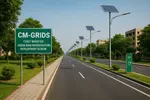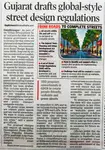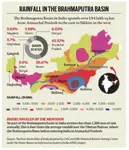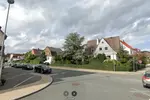Recent Posts
dk nimleshwar zada idhar ana..
Skyroot Orbital Rocket Factory
India's first train.
/Vande Bharat General/ - Probably highest resoluti...
Shinkansen High Speed train might not be coming to...
High Speed Railway General - /HSRG/
Bihar moment
POV: You're driving on any Indian road
India needs mission 5000km High Speed Railway by 2...
Mumbai road work
Our Tofu-dreg era
/INDIAN RAILWAYS/
Urban rail transit thread
City Planning General /CPG/
CM Yogi kino.
Only Board i took virginity of
Indian Bhutan railway link
Map of possible HSR routes in india
How many of you knew
GIFT City
Indian cities need more BRTs and Metro lite
Praise our Municipal Babus 🤩🤩
Indian city infra without baboons involvement
Kinos from Mumbai Coastal road project
Rashtrapati bhawan looks kino
Streetscaping
Gujarat drafts global style street design regulati...
New Railway Super App is out.
Rapid Rail Transit System /RRTS/ General
Rain and Waterlogging
HAPPENING
can infrastructure help us tackle the language pro...
Post Kino Indian Roads and Localities/Sidewalks/Et...
Lowest Level of Government
Queen who helped in building of Chenab bridge
hydrology of bhramputra
Demands of (((farmers))) in Pune for airport infra
Delhi Metro Updates
Semiconductaar Plant Saar
Opinions?
Walkable Infra in India discussions

2o+wtx
No.135
I am trying to put together my thoughts - so refining it with chatgpt.
----
The demand for walkable infrastructure is gaining momentum in mainstream Indian social media discussions. However, several systemic issues continue to hinder its implementation:
# **Key Challenges**
1. Infrastructure Prioritization for Corrupt Gains
- Politicians and builders prioritize expensive projects like flyovers and highways, as they offer greater financial kickbacks.
- Sustainable alternatives like cycling infrastructure, metro-lite, or pedestrian-friendly planning receive minimal funding since most of the money would go directly to industries rather than intermediaries.
2. Disconnected Leadership & Planning Failures
- Politicians and bureaucrats rarely experience cities as pedestrians; they travel in cars on pre-planned routes that are artificially maintained for their visits.
- Urban planning lacks expertise, resulting in poorly designed roads, dysfunctional sidewalks, and chaotic traffic management.
3. Enforcement & Maintenance Issues
- Municipal bodies fail to regulate small-scale violations, leading to encroached sidewalks, broken footpaths, illegal parking, and unhygienic street conditions.
- Hawkers and food stalls, while essential for livelihood, operate in unregulated spaces, making pedestrian movement unsafe.
4. Lack of Holistic Urban Vision
- Most Indian cities expand without proper zoning or planning for public spaces.
- Walkable infrastructure is either an afterthought or simply ignored in favor of car-centric development.
---
**A Movement for Walkable Infrastructure**
To address these issues, Indian cities must undergo a shift in urban planning:
1. Dedicated Cycling and Pedestrian Infrastructure
- Every city should have dedicated cycle tracks, shaded by trees for natural cooling.
- Sidewalks must be well-maintained and free from encroachments.
2. Urban Green Spaces & Water Bodies
- Lakes should be revived and integrated into city planning to reduce heat and improve air quality.
- Expanding green covers around roads and walkways can help mitigate urban heat islands.
3. Balanced Traffic Management
- Roads should be redesigned to include dedicated pedestrian zones and cycle lanes alongside vehicle lanes.
- Strict enforcement against illegal parking and encroachments.
4. Public Transport Expansion
- BRTS (Bus Rapid Transit Systems), metro-lite, and full-scale metros should be prioritized over flyovers in dense cities.
- Public transport should be made more accessible, affordable, and efficient to reduce reliance on personal vehicles.
5. Stray Management & Public Safety
- Stray cattle and dogs should be systematically managed to ensure safer streets.
- Public spaces must be designed with proper lighting, security, and accessibility for all.
---
**Why India Must Prioritize Walkable Cities**
India is not an oil-rich nation, making fuel dependency a major economic and environmental burden. Reducing car dependency through walkable infrastructure is a logical step toward:
- Lower pollution levels, combating both air and noise pollution.
- Reduced urban heat through tree-lined streets and lakes.
- Healthier cities, promoting walking and cycling as viable alternatives to cars.
A national movement for walkable cities is not just necessary—it is the need of the hour. Indian urban development must shift focus from car-centric planning to people-centric, sustainable cityscapes.

2o+wtx
No.137
Achieving walkable infrastructure in India requires a multi-pronged approach involving policy changes, public participation, and administrative accountability. Here’s how it can be done:
---
1. Policy-Level Changes
Urban Planning Overhaul
- Prioritize Pedestrian-First Urban Design: Cities should be planned with pedestrians and cyclists as the primary users, not cars.
- Mandatory Footpaths & Cycling Lanes: Every new road project must legally require footpaths and dedicated cycling lanes.
Reforming Government Incentives
- Stop the "Flyover-Highway Complex": Politicians and bureaucrats prioritize highways and flyovers because of larger contract values. This must be countered with funding incentives for pedestrian-friendly projects.
- Promote Sustainable Transport: Government funding should focus on BRTS, Metro Lite, and non-motorized transport instead of car-centric infrastructure.
- Scrap Free Parking: Car parking in cities should be paid and limited, discouraging personal vehicle usage.
Strict Enforcement Against Encroachments
- Fine violators and businesses that encroach on footpaths.
- Streamline street vending zones to allow businesses while keeping walking spaces free.
---
2. Public Transport & Infrastructure Development
BRTS, Metro, and Public Transport Expansion
- Cities should prioritize BRTS and Metro Lite instead of car infrastructure.
- Public transport should be integrated, affordable, and efficient so people shift away from private vehicles.
Car-Free Zones in Key Areas
- Establish car-free zones in commercial hubs, heritage areas, and dense residential neighborhoods.
- Implement high congestion charges for private vehicles entering crowded city centers.
Lake Restoration & Green Infrastructure
- Urban lakes should be revived with walking tracks and tree-lined spaces.
- Tree plantations along roads & pedestrian zones should be made mandatory to reduce urban heat.
---
3. Community Engagement & Public Awareness
Citizen Movements & Public Demand
- Cities like Indore, Pune, and Bangalore have seen successful citizen-led campaigns for better pedestrian infrastructure.
- Public pressure through petitions, protests, and online campaigns can force local governments to take action.
Corporate & Start-Up Involvement
- Companies can be encouraged to fund public transport improvements, cycle-sharing systems, and pedestrian-friendly spaces through CSR (Corporate Social Responsibility) initiatives.
- Tech-based urban planning solutions (e.g., mapping pedestrian zones, using AI for traffic management) can be developed by startups.
Educational & Awareness Campaigns
- Schools, colleges, and workplaces should promote cycling and public transport use instead of car dependency.
- Nationwide campaigns (like Swachh Bharat) can be launched for walkable cities.
---
4. Implementation & Accountability
Independent Urban Planning Bodies
- Create independent city planning bodies that focus on long-term sustainable infrastructure, free from political interference.
Strict Accountability for Municipal Bodies
- Local officials must be held responsible for broken sidewalks, lack of pedestrian safety, and poor public transport.
- Citizen report mechanisms should be set up (e.g., a mobile app to report bad footpaths or illegal encroachments).
---
How Can We Start?
1. Local Pilot Projects: Start with one well-planned walkable neighborhood in every major city to showcase the benefits.
2. Policy Change at the National Level: Push for mandatory pedestrian and cycling infrastructure in all urban projects.
3. Public-Private Partnerships: Encourage private players to fund cycle lanes, footpaths, and pedestrian plazas.
4. Citizen Movements & Legal Challenges: Use PILs (Public Interest Litigations) to demand better urban planning.

2o+wtx
No.138
>>135(OP)
I am not sure where i am going with this discussion right now, but it's clear that as basic as a cycling and sidewalk with proper greenery would improve things by multifold.
I was watching images from germany, towns are planned something like
>amazing sidewalk
>trains connecting the town
>towns are connected by proper roads with sidewalk, bigger ones have metro
>around road they have green cover of grasses which control the dust problem on the road
I did not see cycling infra but it's kinda nice to see how their small towns are.

2o+wtx
No.139
I think i road infra has come quite far, it's intracity infra which needs work. Rest due to poverty villages and houses will need a bit of time to mature.
Some random place in up.

x0NiVu
No.141
>>139
Roads in India are one of the kinoest in Asia. India in fact outranked China and Israel in the global road quality index last year. The only issue is that roads here aren't properly marked. That alone can alleviate a lot of problems

























































